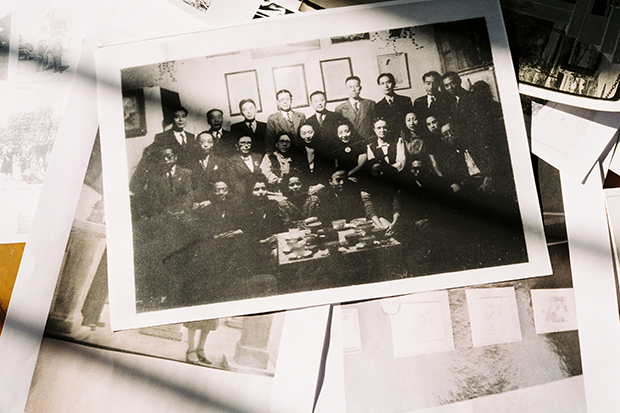Events
Saturday, June 10, 3pm
Around Pan Yuliang
With Éric Lefebvre (director, Musée Cernuschi, Paris) & Francesca Dal Lago (art historian specialized in Chinese art and images of the 20th century).
Roundtable moderated by Nikita Yingqian Cai (curator of the exhibition Pan Yuliang: A Journey to Silence, associate director and chief curator of Guangdong Times Museum)
(This event will be in English)
Éric Lefebvre and Francesca Dal Lago will present an axis of reflection around Pan Yuliang, the talks will be followed by a discussion.

- Photograph taken by Hu Yun of the archive of Marianne Yen, the daughter of the Chinese sculptor Yan Dehui. Courtesy: Marianne Yen & Hu Yun
Being a women and an artist in China during the modern period, between Nationalism and Emancipation
In the later stages of the Empire, in 1911, a deep period of social and cultural changes took place in China, in which women had a main role to play, even if they kept being instrumentalized by the Government as a symbol of the awakening and modernization of the country.
Until then, women were totally subjected to the power of their father and husband – symbolized by the practice of foot binding – however, during the Chinese Republic era (1911 – 1937), women were eventually entitled to receive an education and to self-develop as never before in the Chinese history.
In this presentation, I will talk about the topic of the emancipation of Women during this period through the example of some women who benefited from this unique opportunity to become artists.
Francesca Dal Lago is an art historian specialized in Chinese art and images of the 20th century. She is graduated in Chinese language and civilization from the University of Venice. She completed a PhD in Art History at the New York University Institute of Fine Arts. She successively lived in China, in the US, in Canada and in the Netherlands. In 1993, she was appointed curator of the first Chinese pavilion at the Venice Biennale. She taught Art History at the McGill University of Montreal and was a researcher at the Leyde Unviersity, Netherland. She wrote papers on subjects related to Chinese art during the Modern and Contemporary periods (art of the cultural revolution, contemporary artists, visual propaganda of the Chinese communist party etc.). Since her arrival in Paris in 2011, she has been interested in Chinese artists who lived in France and Europe during the inter-war period and on the issue of methodological ways of exhibiting Chinese art in Western museums.
Chinese artists in Paris: actions and exhibitions
Eric Lefebvre is the Director of the Musée Cernuschi - Museum of Asian Art of the city of Paris.
From 2013 to 2015 he was the curator of Chinese Paintings and Calligraphy at the Musée Guimet (MNAAG) in Paris. From 2004 to 2013 he was curator of the Chinese collections at the Musée Cernuschi, where he organized several exhibitions, including, most recently Chinese artists in Paris, from Lin Fengmian to Zao Wou-ki (Paris, 2011), The Shanghai School, Paintings and Calligraphies from the Shanghai Museum (Paris, 2013), Paris-Chinese Painting, the legacy of the XXth Century Chinese Masters (Hong-Kong, 2014), Splendor of the Han, Rise of the Celestial Empire (Paris, 2015), Walasse Ting, The Flower Thieft (2016).
Eric Lefebvre holds a doctorate in art history from Sorbonne University, with a dissertation on Ruan Yuan’s collections as an example of the transmission of cultural heritage in pre-modern China. His fields of research are the history of collections of Chinese art in late imperial China and modern Europe, and the history of the Chinese artistic presence in Paris in the XXth century. Between 2002 and 2014 he was an associate lecturer at the Sorbonne University.
Partager